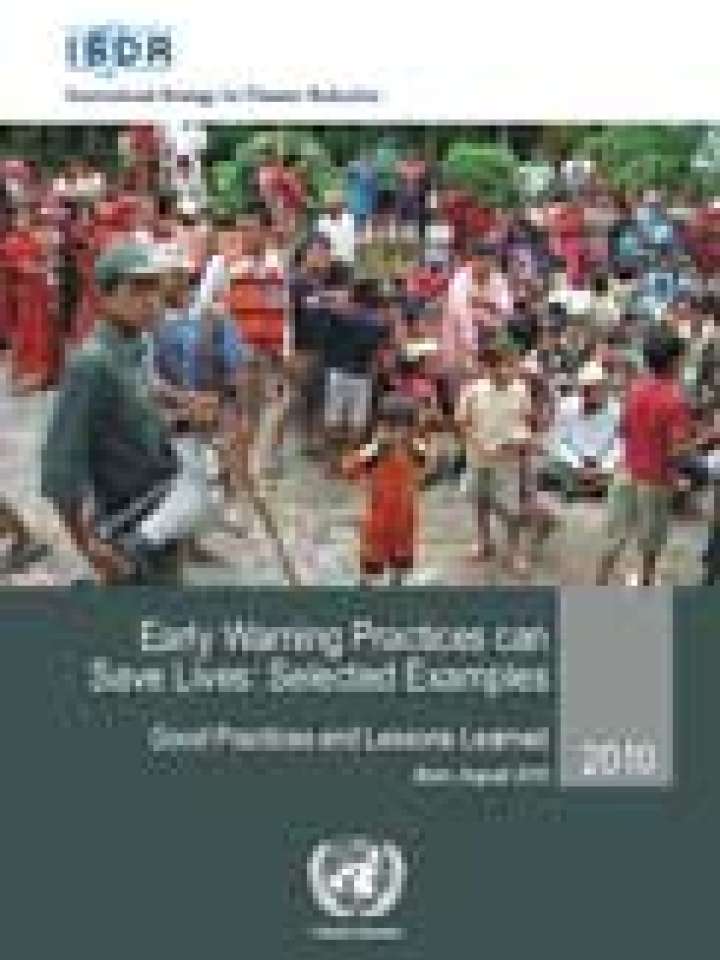Early warning practices can save lives: selected examples
This publication is a compilation of good practices and lessons learned on early warning systems at different scales. Covered are natural hazards such as wildland fire, drought, floods, tsunami and extreme weather events. It highlights the importance of having an integrated approach on the relevance of community participation in planning and managing early warning systems as a key component in risk reduction programming which will save lives and property. The compilation is aimed at ISDR system stakeholders that are interested in early warning issues. The examples are intended to encourage organisations, governments and non-governmental, and regional stakeholder groups to contribute in gathering cases in their country to build awareness on the importance of early warning systems as part of disaster risk reduction.
The examples in the first section of the publication - focusing on early warning systems itself - show how communities can be involved in this process or how they can initiate the establishment of an early warning system at local level in connection with those at national, regional and international levels. Examples in the second part describe activities that support the functioning, the data quality and the monitoring of early warning systems. For ease of reference, each good practice is presented in the same format beginning with a short abstract, an overview of the initiative that includes the objectives and the process, the presentation of the good practice, itself, the lessons learned, and finally how the initiative can be replicated.
